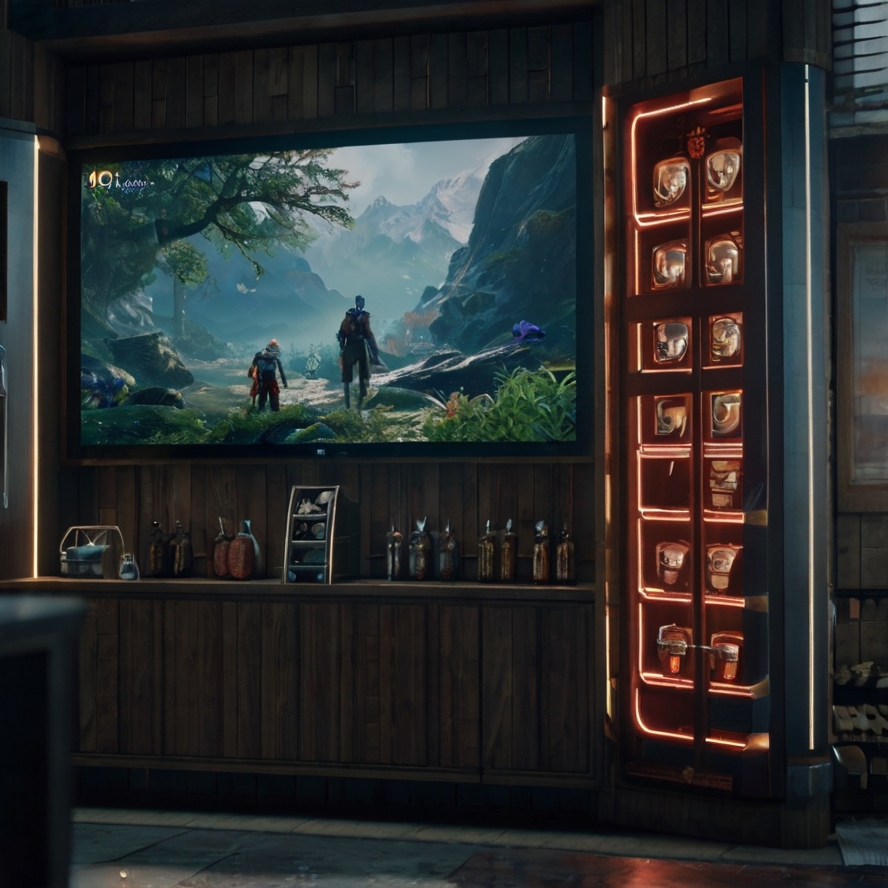The In-Game Advertising Market is on the cusp of a transformative phase as we approach 2031. With the rapid advancement of technology, shifting consumer behaviors, and the ever-expanding gaming ecosystem, the potential for innovative advertising strategies within games is becoming increasingly apparent. This article delves into the emerging opportunities for brands in the in-game advertising space and how they can capitalize on the evolving landscape.
Expanding the Gaming Ecosystem
The gaming ecosystem is more vibrant and diverse than ever before, encompassing not just traditional console and PC games but also mobile gaming, cloud gaming, and immersive experiences like augmented and virtual reality. As the audience for gaming grows, advertisers have the chance to engage with players across various platforms, reaching a wider demographic than they ever thought possible.
With the proliferation of online gaming communities and social platforms, brands can now tap into a myriad of channels to connect with players. For instance, community-based games and platforms allow for direct interaction between players and brands, facilitating a more personal advertising experience that resonates well with gamers.
Innovative Advertising Formats
The in-game advertising landscape is witnessing a shift towards more creative and immersive formats. Brands can now leverage native advertising, where promotional content is integrated seamlessly into the gameplay. This not only enhances the player experience but also ensures that advertisements are perceived as part of the gaming environment, rather than an intrusive interruption.
Dynamic advertising is also gaining traction, allowing for real-time updates and personalized content based on player preferences and behaviors. For example, virtual billboards can display relevant ads that change based on the player’s location within the game or their previous interactions with a brand, making the advertising experience more engaging and targeted.
Leveraging Player Engagement
One of the most compelling aspects of in-game advertising is the potential for high levels of player engagement. Gamers are often highly invested in their gaming experiences, spending significant time immersed in virtual worlds. This provides brands with a unique opportunity to create interactive campaigns that capture players’ attention.
Rewarded ads, where players receive in-game benefits for viewing or interacting with advertisements, have proven to be particularly effective. This approach not only incentivizes players to engage with the content but also fosters a positive association with the brand. As players enjoy the rewards, they become more receptive to future advertising efforts.
Capitalizing on Esports and Streaming
The meteoric rise of esports and gaming streams presents another exciting opportunity for brands in the in-game advertising market. Esports events attract millions of viewers, offering a platform for brands to showcase their products to an engaged audience. Sponsoring esports tournaments or partnering with popular teams can significantly increase brand visibility and credibility.
Additionally, live-streaming platforms like Twitch and YouTube Gaming provide advertisers with opportunities to integrate their brands into streams. Collaborating with influencers or streamers who resonate with specific target demographics can lead to authentic brand endorsements, further enhancing audience engagement and trust.
The Role of Data and Analytics
As the in-game advertising market evolves, the importance of data analytics cannot be overstated. By leveraging player data, brands can gain valuable insights into player preferences, behaviors, and engagement patterns. This information can be used to refine advertising strategies, ensuring that campaigns are not only relevant but also personalized.
Artificial intelligence (AI) and machine learning are becoming essential tools for advertisers in understanding player behavior. By analyzing vast amounts of data, brands can identify trends, optimize ad placements, and enhance targeting strategies, resulting in more effective and impactful campaigns.
Addressing Privacy Concerns
As brands explore new opportunities within the in-game advertising market, they must also be vigilant about addressing privacy concerns. Gamers are becoming increasingly aware of how their data is used, and any perceived misuse can lead to negative perceptions of brands.
To build trust, brands should prioritize transparency in their data practices and ensure compliance with data protection regulations. Providing players with clear information about how their data is used and offering opt-out options can foster positive relationships between brands and consumers.
Conclusion
In conclusion, the in-game advertising market is poised for significant growth and innovation by 2031. With the expanding gaming ecosystem, the rise of creative ad formats, and the potential for deep player engagement, brands have an unprecedented opportunity to connect with their audiences in meaningful ways. By embracing these opportunities and prioritizing transparency, brands can position themselves for success in the evolving landscape of in-game advertising. As gaming continues to shape the future of entertainment, advertisers who adapt and innovate will thrive in this dynamic market.
